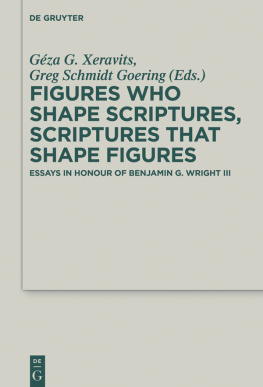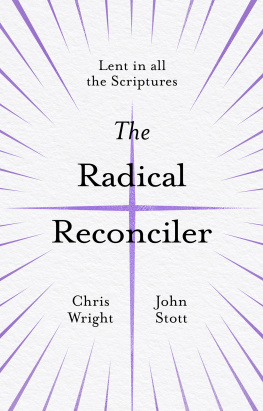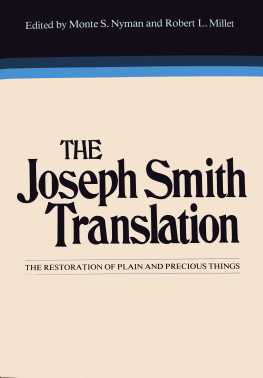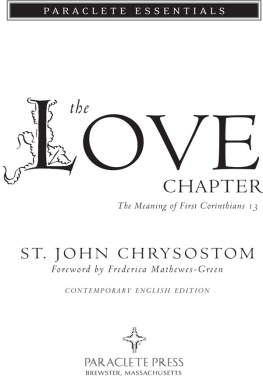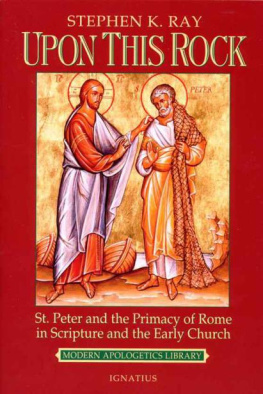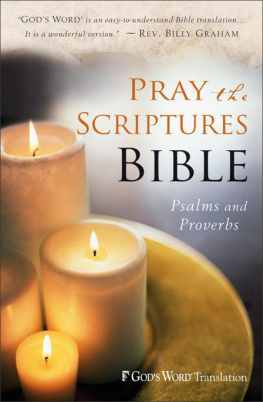John Henson - Good as New: A Radical Retelling of the Scriptures
Here you can read online John Henson - Good as New: A Radical Retelling of the Scriptures full text of the book (entire story) in english for free. Download pdf and epub, get meaning, cover and reviews about this ebook. year: 2013, publisher: John Hunt Publishing, genre: Religion. Description of the work, (preface) as well as reviews are available. Best literature library LitArk.com created for fans of good reading and offers a wide selection of genres:
Romance novel
Science fiction
Adventure
Detective
Science
History
Home and family
Prose
Art
Politics
Computer
Non-fiction
Religion
Business
Children
Humor
Choose a favorite category and find really read worthwhile books. Enjoy immersion in the world of imagination, feel the emotions of the characters or learn something new for yourself, make an fascinating discovery.
- Book:Good as New: A Radical Retelling of the Scriptures
- Author:
- Publisher:John Hunt Publishing
- Genre:
- Year:2013
- Rating:5 / 5
- Favourites:Add to favourites
- Your mark:
- 100
- 1
- 2
- 3
- 4
- 5
Good as New: A Radical Retelling of the Scriptures: summary, description and annotation
We offer to read an annotation, description, summary or preface (depends on what the author of the book "Good as New: A Radical Retelling of the Scriptures" wrote himself). If you haven't found the necessary information about the book — write in the comments, we will try to find it.
John Henson: author's other books
Who wrote Good as New: A Radical Retelling of the Scriptures? Find out the surname, the name of the author of the book and a list of all author's works by series.
Good as New: A Radical Retelling of the Scriptures — read online for free the complete book (whole text) full work
Below is the text of the book, divided by pages. System saving the place of the last page read, allows you to conveniently read the book "Good as New: A Radical Retelling of the Scriptures" online for free, without having to search again every time where you left off. Put a bookmark, and you can go to the page where you finished reading at any time.
Font size:
Interval:
Bookmark:


First published by O-Books, 2004
O-Books is an imprint of John Hunt Publishing Ltd., Laurel House, Station Approach, Alresford, Hants, SO24 9JH, UK
www.o-books.com
For distributor details and how to order please visit the Ordering section on our website.
Text copyright: John Henson 2004
ISBN: 978 1 90504 711 6
All rights reserved. Except for brief quotations in critical articles or reviews, no part of this book may be reproduced in any manner without prior written permission from the publishers.
The rights of John Henson as author have been asserted in accordance with the Copyright, Designs and Patents Act 1988.
A CIP catalogue record for this book is available from the British Library.
Design: Andrew Milne Design Limited
Printed in the UK by CPI Antony Rowe
Printed in the USA by Offset Paperback Mfrs, Inc
We operate a distinctive and ethical publishing philosophy in all areas of our business, from our global network of authors to production and worldwide distribution.
This volume contains most of the books included in what is commonly called the New Testament. See Firing the Canon for an explanation as to the selection of books. The terms Old and New Testament have been used by tradition to describe the first or second parts of the Bible. Its rude to those of the Jewish faith and the terms are misapplied, since in both Hebrew and Christian scriptures New (Covenant) refers to a new and radical relationship with God, not to a collection of texts.
John Henson is a retired Baptist minister from the liberal evangelical tradition of the Baptist churches. His life long passion is introducing people to Jesus. He continues to be an activist in the causes of Christian unity, genuine contemporary worship, peace and justice issues, and the education of the Christian community to full inclusiveness.
W hat would Christianity look like, what would Christian language sound like, if we really tried to screen out the stale, the technical, the unconsciously exclusive words and policies and to hear as if for the first time what the Christian scriptures were saying? John Henson has devoted much of his life to wrestling with this challenge, and has for many people made those scriptures speak as never before indeed, as for the first time. Patiently and boldly, he has teased out implications, gone back to roots, linguistic and theological, and re-imagined the process in which a genuinely new language was brought to birth by those who had listened to Jesus because they knew they were in a genuinely new world.
Some of Johns versions will startle; but only because we have forgotten what the impact might have been in the ancient world of a small library of books written in the dialect of the streets and shops, with many of the leading characters identified by slightly outlandish nicknames. And also, because we have not much living language left for authority figures, we fail to sense the impact of the images of royalty and so on in the pages of scripture; we need other terms to make them come alive.
Johns presentation of the Christian gospel is of extraordinary power simply because it is so close to the prose and poetry of ordinary life. The Gospels tell us that Jesus unprofessional and unreligious audiences heard him gladly: if they are to hear him gladly today, they will need something like Johns renderings for this to be plausible. His work is for a large part of the religious reading public a well-kept secret; I hope that this book will help the secret to be shared, and to spread in epidemic profusion through religious and irreligious alike.
Rowan Williams, Archbishop of Canterbury
D espite the fact that my shelves, and yours probably, are sagging beneath the weight of all the translations of the scriptures that have appeared in the past forty years or so, we still await a version that strikes as a genuinely contemporary version. Life and language move so quickly that it is a matter of running to stay on the same spot, and translators of the scriptures are characterized by care and caution rather than by the need to keep pace. Move on we must, however, if we believe the scriptures have abiding value for every age and culture as a unique record of humankinds adventure with God.
Two things need to be done. In the first place scholars must continue to study the original languages and explore the cultural situations they expressed. This work has been done very well in the past hundred years and there are commentaries full of sound scholastic argument for the probable meaning or meanings of every word of the received texts. Rarely, however, is there total agreement on the precise meaning of any particular passage, only a study of the options. The choice means that the translator can never avoid bias of a sort. An attempt at word-for-word translation of the Greek or Hebrew, even if possible, would not produce clarity but mystery and ambiguity. In order to clarify, the translator must opt, and this accounts for quite conflicting meanings in differing translations, which nevertheless claim to be true translations rather than paraphrases. Did Jesus say to Simon Peter, Do you love me more than all else? (NEB) or more than these others? (REV)? Both are possible, but which you choose will strongly affect the total meaning of the incident recorded. It is of no help to take the line of the NIV, which translates more than these. This allows us to make up our own minds but is of itself meaningless since we are given no clue as to the these referred to. Too much of this kind of ambiguity will confuse or bore especially the first-time reader who is seeking meaning not a puzzle. The common distinction made between a translation and a paraphrase is thus a false one. What usually passes for a paraphrase rather than a translation indicates the degree of venturesomeness in elucidating the meaning. This is what most readers want unless they are scholars, in which case they should be directed to the original languages. We need to warn people that no translation or paraphrase is any more than somebodys intelligent, scholarly, inspired, and, one hopes, honest guess. For those who prefer certainty to faith this is a hard pill to swallow. We should always advise the devotee to have at hand at least two translations in order to preserve choice in the matter of interpretation. The work of scholarship must go on in order to check avoidable inaccuracies and to open up the field of options.
The second thing needed is a combination of human skills. The scriptures were written by real people for real people. We must assume a common humanity between the first writers and readers and ourselves, otherwise we may as well give up from the start. Nobody will communicate anything to anybody. However, within our common humanity people differ. Some people are held to be more religious. Others are thought to be more down-to-earth. Some revel in wandering through the forests of scholarship and doctrinal dispute, others want to get to the point, otherwise they are not interested. The problem is that those who translate the scriptures have always been religious and scholarly and heavily committed in the matter of doctrine. To such people communicating with the rough and ready is difficult and for many of them it does not occur that they need to try. They translate in the language of an academic elite and assume this is the language that ought to be spoken by everybody else. I remember asking J. B. Phillips in a seminar what was the essential difference between the language of his translation and the language of the
Font size:
Interval:
Bookmark:
Similar books «Good as New: A Radical Retelling of the Scriptures»
Look at similar books to Good as New: A Radical Retelling of the Scriptures. We have selected literature similar in name and meaning in the hope of providing readers with more options to find new, interesting, not yet read works.
Discussion, reviews of the book Good as New: A Radical Retelling of the Scriptures and just readers' own opinions. Leave your comments, write what you think about the work, its meaning or the main characters. Specify what exactly you liked and what you didn't like, and why you think so.


